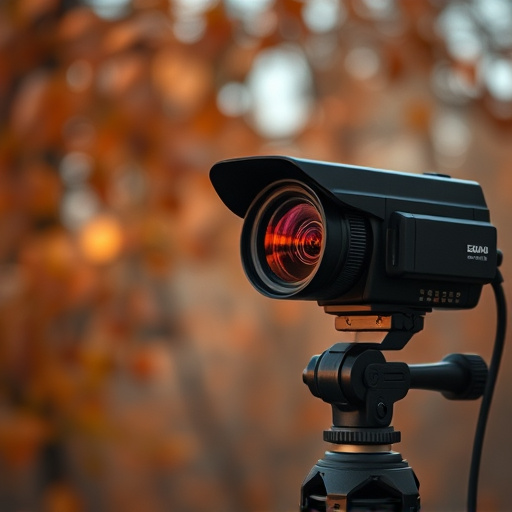Battery-powered spy cameras, operating discreetly on rechargeable batteries, are advanced outdoor surveillance devices. RF detection tools identify these cameras by scanning for unusual signal patterns, with advanced detectors offering precise pinpointing. In urban areas, passive RF scanning and visual inspections enhance detection in challenging outdoor environments. Thermal imaging and specialized RF detectors complement visual methods, ensuring thorough identification of battery-powered spy cameras outdoors.
Uncover the subtle threats of hidden cameras with our comprehensive guide. Learn to identify battery-powered spy cameras, as these clandestine devices often operate wirelessly, posing unique challenges. We’ll walk you through detecting radio frequency signals, a key method for their location. From outdoor techniques to pinpointing camera positions, this article equips you with essential knowledge to ensure privacy and security in today’s digital world.
- Understanding Battery-Powered Spy Cameras
- Detecting Radio Frequency Signals
- Outdoor Detection Techniques
- Identifying Hidden Camera Locations
Understanding Battery-Powered Spy Cameras
Battery-powered spy cameras, often referred to as outdoor surveillance cameras, have become increasingly sophisticated and prevalent in today’s world. These tiny devices are designed to operate discreetly, making them a favorite choice for those seeking to monitor their surroundings without drawing attention. Typically, these cameras are powered by rechargeable batteries, allowing them to function autonomously for extended periods.
Understanding the battery life and charging patterns of such spy cameras is crucial. Many models employ low-power modes when not actively recording, conserving battery charge. This feature ensures the camera can operate for weeks or even months on a single charge, making them ideal for long-term surveillance. When not in use, the camera’s power consumption is minimal, allowing it to remain hidden and active without raising suspicion.
Detecting Radio Frequency Signals
Detecting radio frequency (RF) signals is a crucial step in identifying hidden cameras, especially those that operate on battery power and are strategically placed outdoors. These devices often emit RF signals for communication purposes, making them detectable with the right tools. One effective method is to use an RF detector, which can scan for signals across various frequencies. By scanning through different channels, you may pick up on unusual activity or patterns indicative of a spy camera’s transmission.
When searching for battery-powered outdoor cameras, look for consistent signal spikes or unique frequency signatures that could suggest the presence of such devices. Some advanced detectors even allow you to record and analyze these signals, helping to pinpoint the source with greater accuracy. Regularly testing known locations where hidden cameras are suspected can establish a baseline for normal RF activity, making it easier to identify any anomalous readings.
Outdoor Detection Techniques
Outdoor environments present unique challenges for detecting hidden cameras, particularly battery-powered spy cameras that are designed to operate discreetly. One effective technique involves utilizing radio frequency (RF) detection tools, which can pinpoint devices transmitting signals. This is especially useful in areas with dense vegetation or structures where visual inspections may be limited. RF detectors emit signals that disrupt the camera’s communication, causing it to become detectable.
Additionally, professionals often employ passive RF scanning methods, allowing them to identify devices by analyzing existing radio frequency emissions. By targeting specific bands commonly used by spy cameras, this approach can reveal hidden battery-powered surveillance equipment. This technique is particularly valuable in urban settings where high-tech stealth cameras are more prevalent, ensuring a thorough and non-intrusive search for privacy invaders.
Identifying Hidden Camera Locations
Identifying hidden camera locations, such as battery-powered spy cameras designed for outdoor use, requires a meticulous approach. One effective method is to conduct a thorough visual inspection of areas where these devices are commonly placed, including trees, bushes, and dark corners. Look for any unusual objects or equipment that might be attached to surfaces, as these could be indicators of hidden cameras. Advanced technology like thermal imaging and radio frequency (RF) detectors can also aid in detecting these devices, especially when traditional methods fail.
RF signals are commonly used by many electronic devices, including spy cameras. By utilizing specialized RF detectors, one can trace the source of wireless signals. When a battery-powered spy camera is active, it emits unique RF patterns that can be picked up by these devices. This method is particularly useful in indoor settings or areas with dense vegetation where visual inspection might not yield results.
In the quest to uncover hidden surveillance, understanding battery-powered spy cameras and their radio frequency (RF) signatures is paramount. By mastering RF detection techniques, both indoors and outdoors, you can effectively identify these clandestine devices. With a combination of knowledge from this guide, staying one step ahead of potential privacy breaches becomes feasible, ensuring your personal and public spaces remain secure from hidden cameras.
